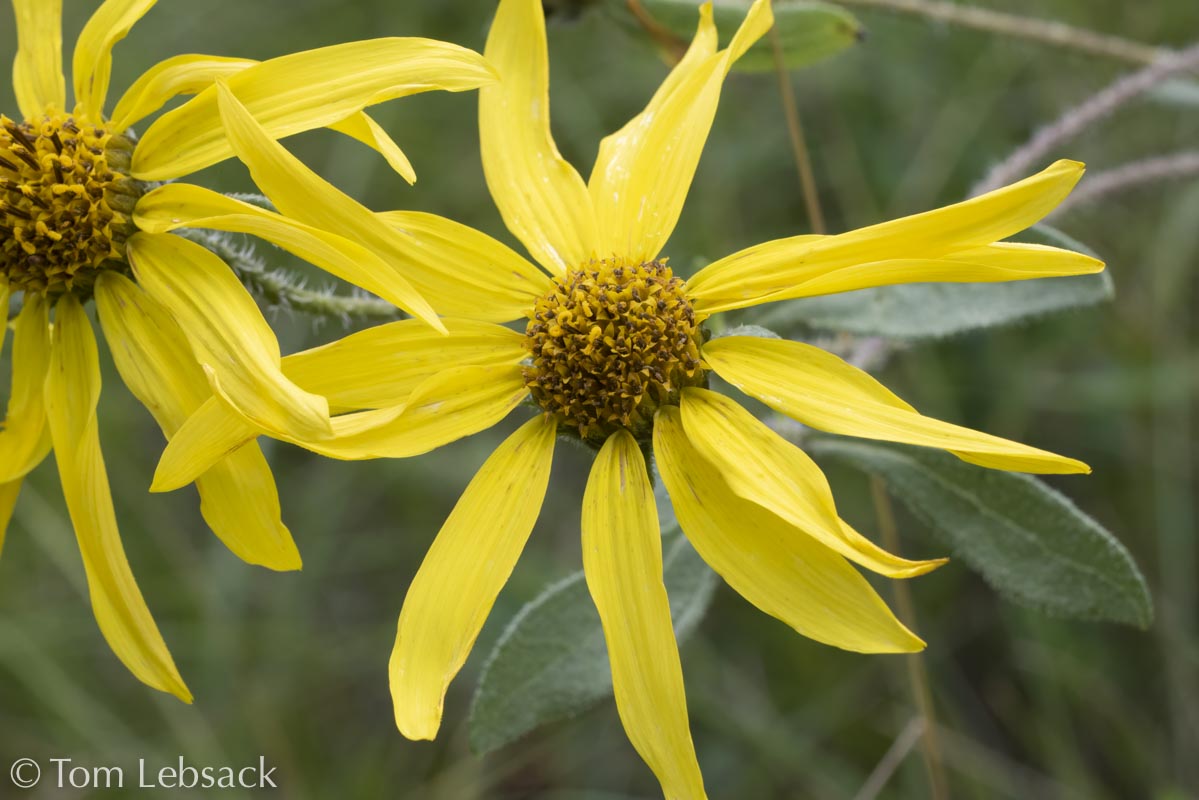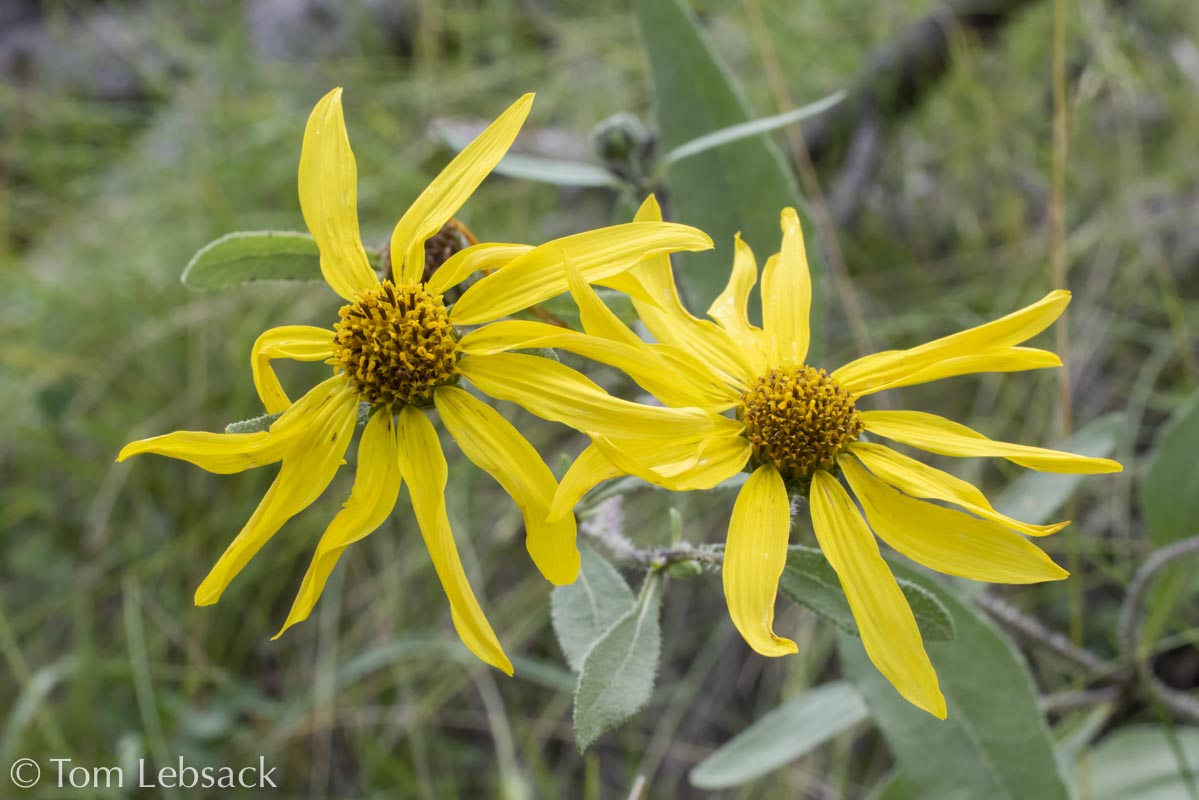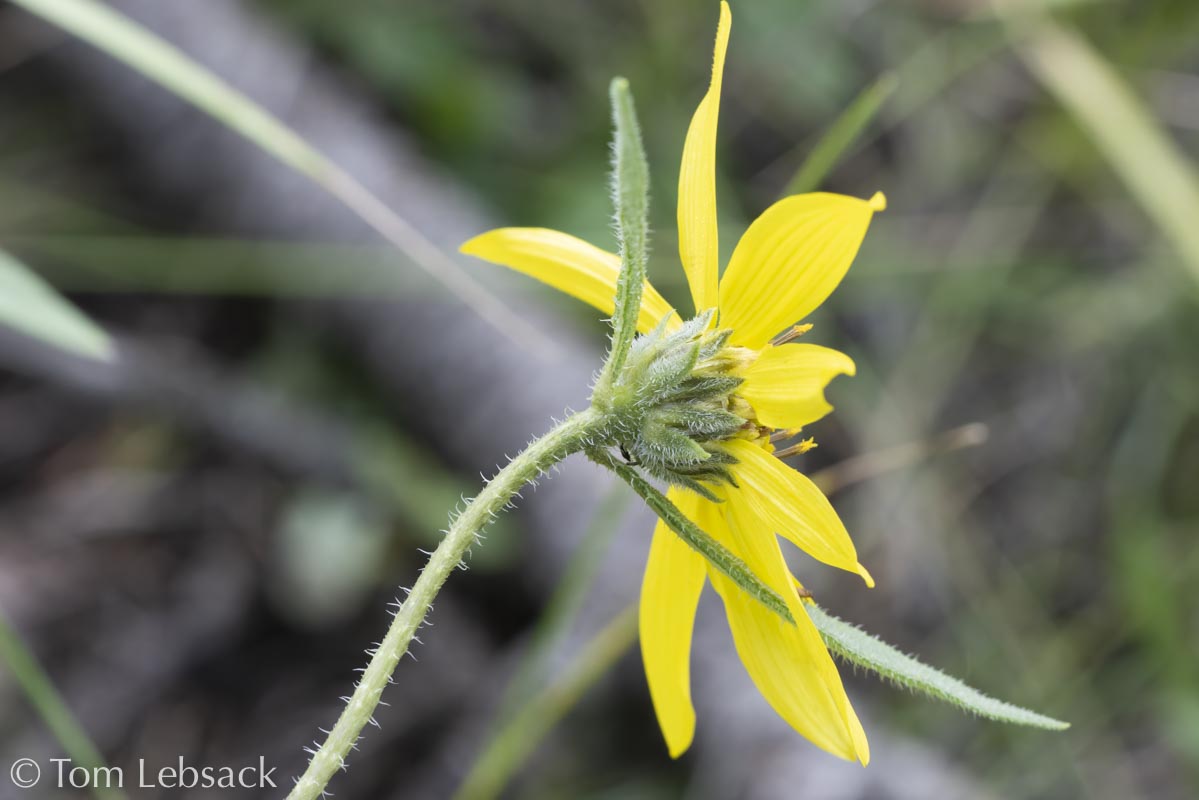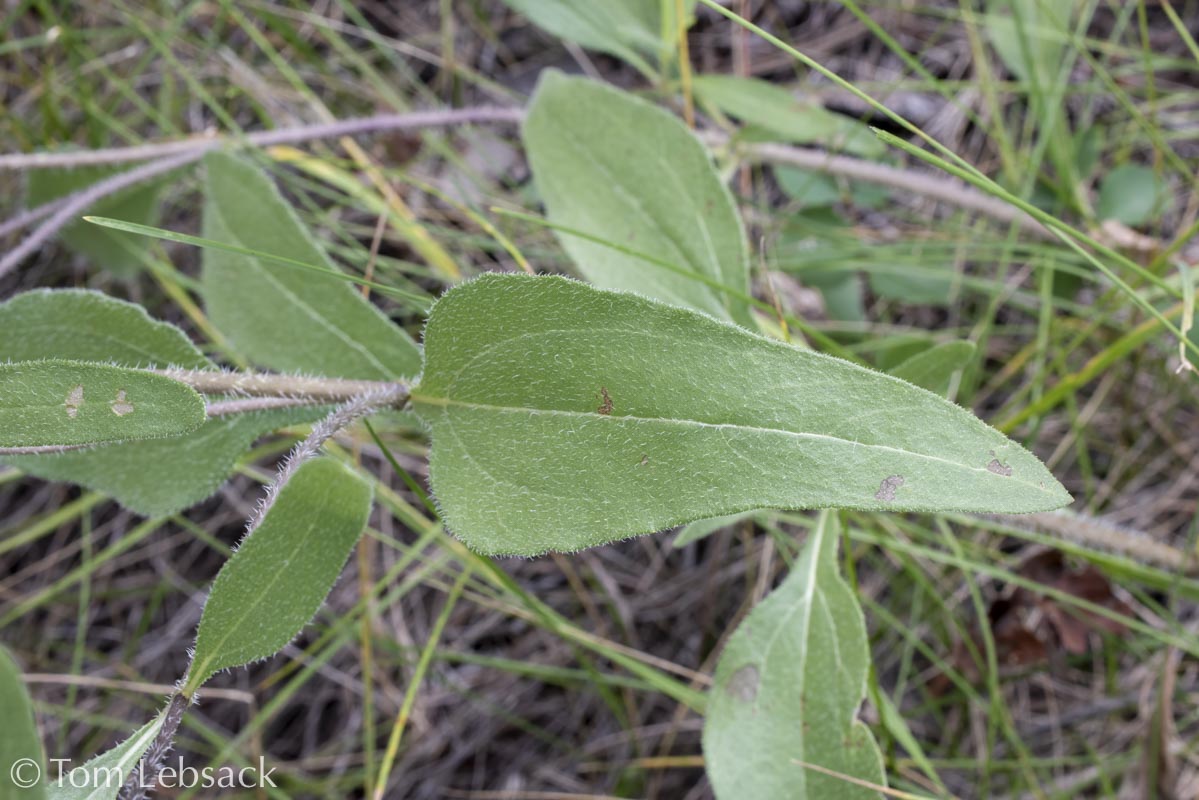Helianthus pumilus
(Little Sunflower)
| Scientific Name | Helianthus pumilus | USDA PLANTS Symbol | HEPU3 |
| Common Name | Little Sunflower | ITIS Taxonomic Serial No. | 36679 |
| Family | Asteraceae (Sunflower) | SEINet Reference |
Click Here |
| Description |
Life zones and habitat: Plains to montane (5000 to 9000 ft.); dry rocky soils in open areas, meadows and grasslands. Plant: Erect perennial from 12 to 40 inches tall; stems simple or branched and covered with stiff, bristly hairs (hispid). Leaves: Opposite, grayish-green lanceolate to ovate blades 1/6 to 6 inches long and 0.4 to 2 inches wide, on petioles 0.2 to 1.2 inches long; edges are entire or serrate; surfaces have short, rough hairs and are gland-dotted. Inflorescence: A few composite heads up to 2 inches across on short peduncles; 8–13 yellow rays and 30+ disk florets having yellow corollas and dark brown to black anthers; involucre below has 15 to 25 bracts that are 0.3 inches long or less, covered with stiff, white hairs and are gland-dotted. Bloom Period: June to October. References: "Flora of Colorado" by Jennifer Ackerfield, Flora of North America and Montana Field Guide. |
BONAP Distribution Map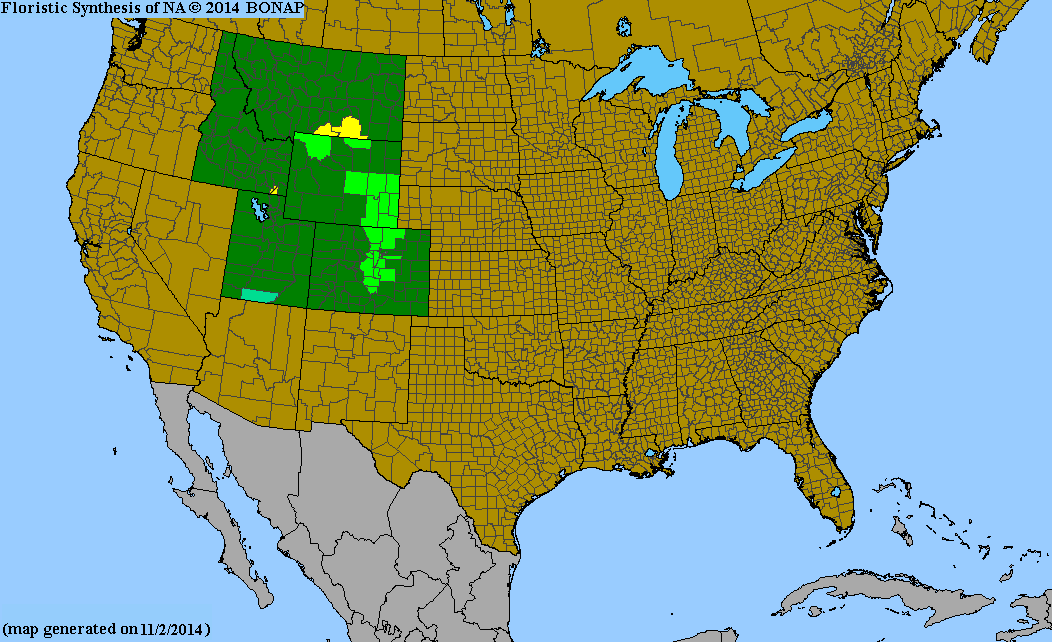 Map Color Key |
Colorado Status: Native |
© Tom Lebsack 2025
Banner photo: Castilleja rhexifolia and a brewing storm over the San Juan Mountains
I try to provide accurate, up-to-date, and relevant information, but cannot guarantee the completeness or accuracy of any information presented on this website. I use authoritative references to insure high standards of accuracy and review and update the information frequently.
